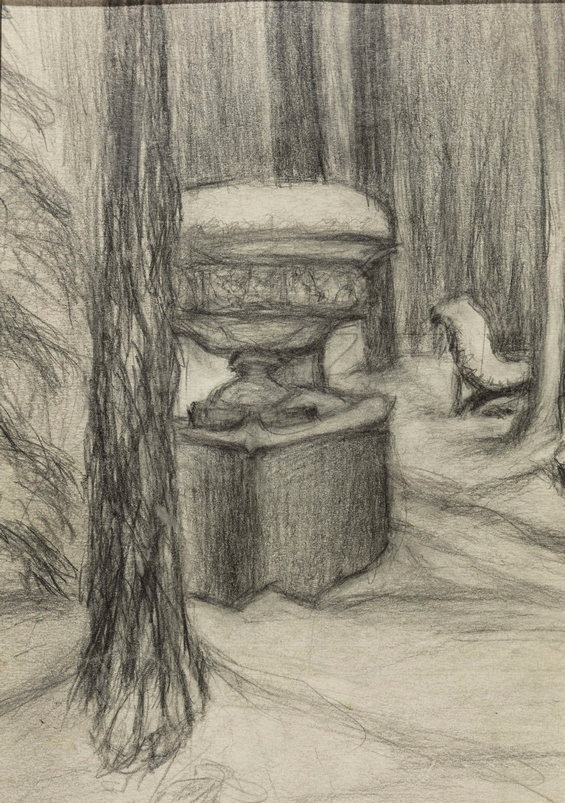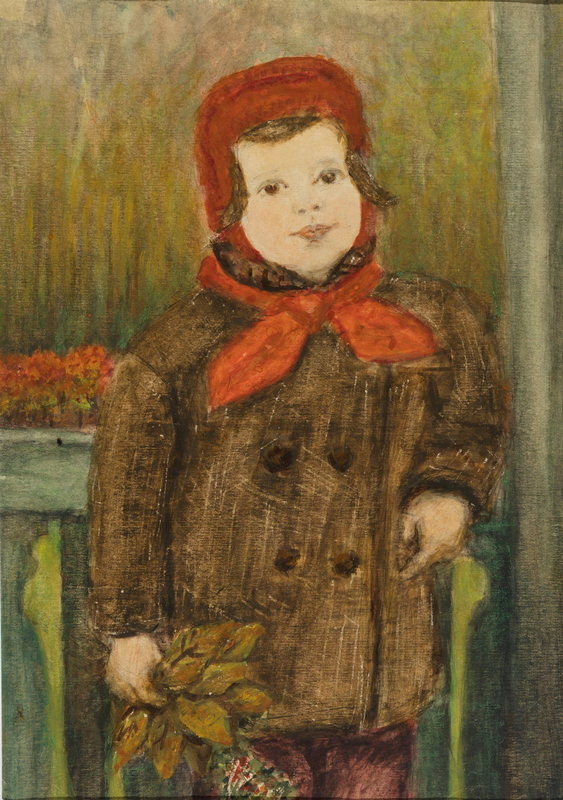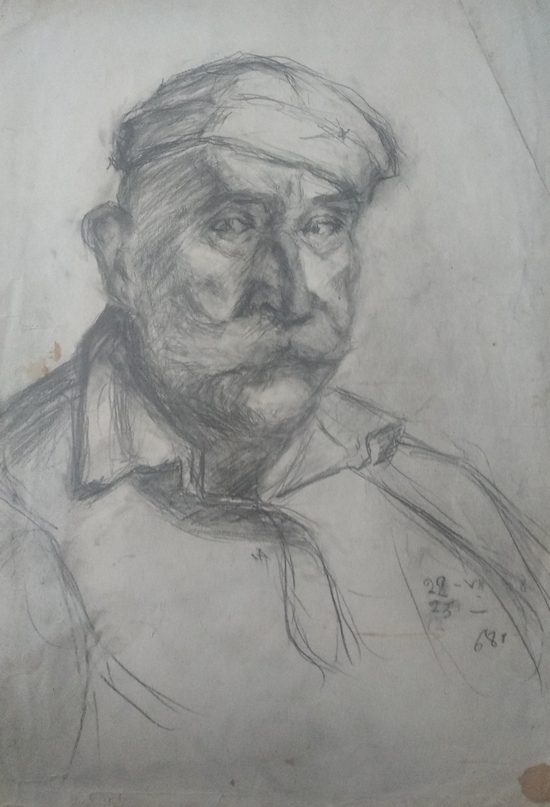‘Park Artist’. Mikhail Staniuta and his ‘Čaliuskincaŭ Park’ Cycle
There was the exhibition and publications during the event. He can be called the artist of one painting ‘Portrait of the Daughter’. Stefanija Staniuta was an 18-year-old student of the Belarusian Drama Studio in Moscow at that time. She became People’s Artist of the BSSR and the USSR later. This portrait is widely known, because it is often printed in albums on the art of the 20th century. After his retirement in the post-war years, Staniuta stopped painting, because he preferred graphics. The drawings started by the 70-year-old artist in the late 1940s and early 1970s in the Čaliuskincaŭ Park are completely unknown to the public. Hundreds of such drawings have been preserved in the collection of the artist’s son Uladzimir Staniuta, and some of them are in the state museums.
The Park of Culture and Rest received its name in honor of the feat of the northern expedition of ‘Chelyuskin’ crew members in the 1930s. It was made as a forest park in 1932 on the site of the former Vankovichy Forest, which was well known to the artist since the 1910s. There were family picnics on the dairy farms in that area.
It’s a precious memory for the artist. The sky was never visible from the windows of his apartment in a new house on Kamsamolskaja Street opposite the Dzerzhinsky Club. It was difficult to work there. There were some stops to get the outskirts of Minsk, and the artist appeared in the pine forest within the town. Mikhail Staniuta sat on a bench next to the wooden Raduga Cinema every day. He drew the park and passers-by. This was actually his studio. He needed communication and work on nature. He brought joy to people, which was sometimes regarded as an old man’s eccentricity, but it was a manifestation of higher wisdom.
Mikhail Staniuta became a kind of ‘landmark’ of the park. People surrounded him and watched how he made a portrait. These hundreds of drawings in colored pencils and watercolor were often created at a time. They are full of sincerity and warmth for people. This is a kaleidoscope of different people, for example, professors and ice cream sellers, children and bearded elders.
The artist signed his name, surname and address. He also wrote creation time. There are often several dates on a sheet, which means that the artist agreed with his model for several sittings. They are residents of Minsk and visitors who were attracted by the park with its attractions and the Children’s Railway opened in 1955. People went to the park with its entertainments as chess, swings and a dance floor. Old people and children were in the park in the afternoon, but young people came there in the evening. So, the artist had many successful children’s portraits. Staniuta’s children are idealized and fabulous. They are depicted with tenderness. Mikhail Staniuta could be a nice children’s illustrator of magazines and books, but this was unclaimed.
These portraits depict not only the atmosphere of post-war Minsk in the 1950s and 1960s, but also the graphic realism of the Moscow Graphic School (VKHUTEMAS) of the 1920s, where Staniuta studied in the early 1920s. Portraiture was not a means of income for the artist, although there were events when portraits were paid for. Usually people gave 1–2 rubles for them, and only once an Indian student gave him 10 rubles. It was much money for that time. The artist’s family lived in spartan conditions on his pension of 52 rubles. His style of painting was getting more and more relaxed from day to day.
Mikhail Staniuta is an old man of Belarusian painting and a member of the Union of Artists. He organized the first art exhibition in the capital of the Soviet Belarus in 1921. The most of his 1930s paintings bought by the museum were taken to Germany in 1941. They have never been returned. The surviving pictures were stored in his apartment. The artist wrote his detailed autobiography.
In 1971, young enthusiasts had the idea to organize the solo exhibition of Mikhail Staniuta for his 90th birthday in the halls of the Belarusian Union of Artists. Art expert Barys Krepak and artist Jauhien Kulik helped to select the works and frame them. Valieryj Palikarpau, the young director of the Baranavičy Regional Museum, published a small but informative catalogue about the creative heritage of Mikhail Staniuta: 54 works of paintings, watercolors, pastels and drawings in pencil, and all 11 exhibitions in which the master took part. As for Mikhail Staniuta, the catalogue became the greatest value and documentary confirmation of his creative activities. This anniversary final exhibition determined the fate of his paintings. The exhibition in the Union of Artists was visited by Aliena Aladava, the director of the State Art Museum, who discovered the ‘amazing Staniuta’ for herself. Famous musicologist Radaslava Mikalajeuna, the daughter of Aliena Aladava, said that Staniuta’s name often sounded in their house.
A year after the exhibition, Staniuta sold two paintings ‘Self-Portrait’ and ‘Portrait of Filipovich’, and 9 graphic works. The artist at the age of 90 got a big fee, on the percentage of which his family lived for several years.
In different years, the exposition of the National Art Museum of the Republic of Belarus included three of his paintings ‘Portrait of the Daughter’ (1923), ‘Portrait of Mikhail Filipovich, an Artist’ (1925) and ‘Self-Portrait’ (1935). Thanks to these works, he entered the history of Belarusian art in the first half of the 20th century.
According to the artist’s grandson ‘his apartment was full of hundreds of painted faces’, so the graphic works of Mikhail Staniuta were perceived as something applied, or a kind of technical exercises to train the hand. There is a complete different attitude to this little-known stage of his career today. The artist made the portraits of people passing by spending their leisure time in the park daily during 20 years. Today, this series would be called a long-term conceptual project. The artist did his work naturally and simply. This diverse gallery of portraits of the post-war generation of Minsk residents and guests is something attractive and true. It is an artistic interpretation of everyday history. This is the phenomenon of his graphic art.










